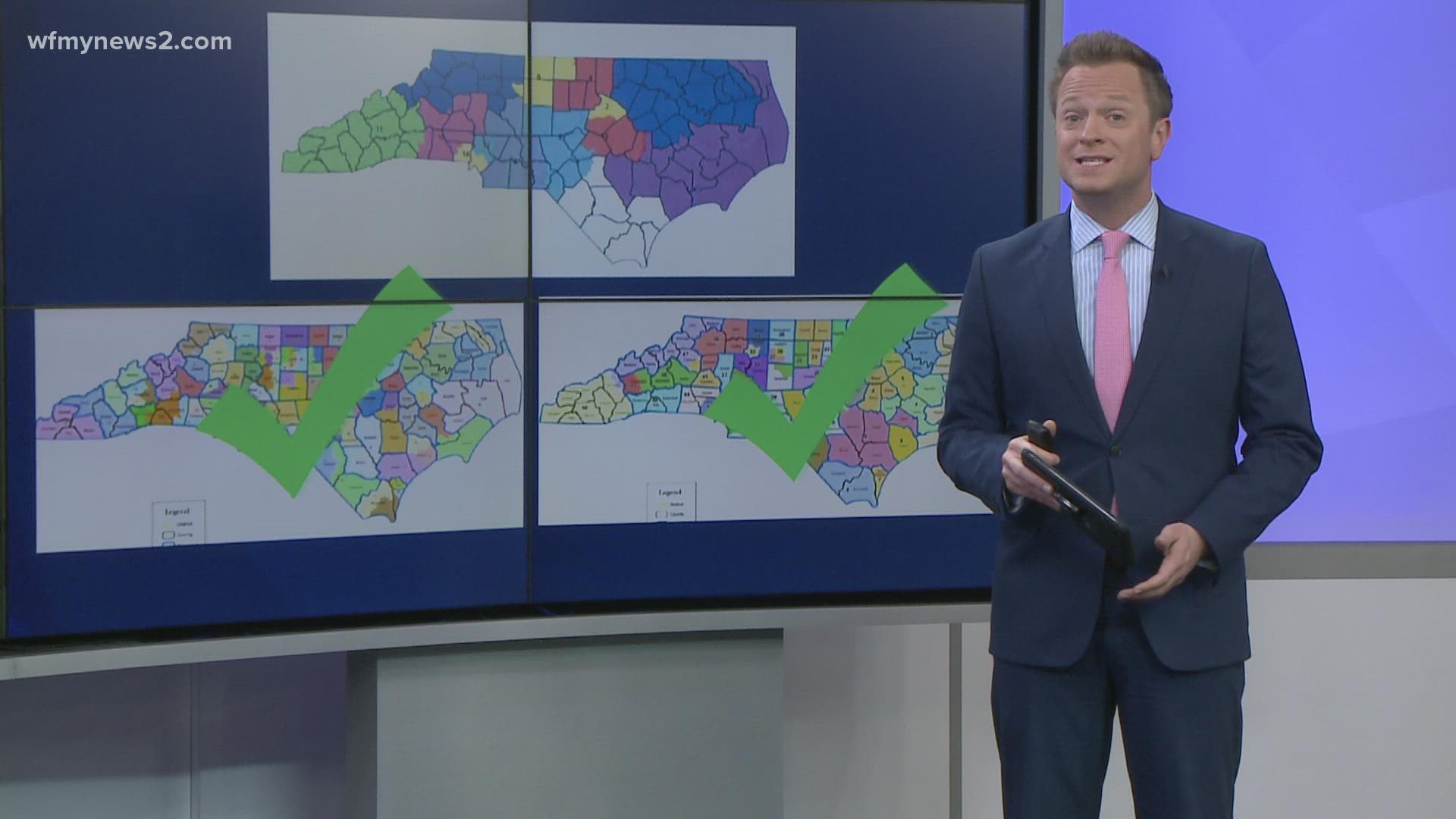RALEIGH, N.C. — A panel of trial judges has made additional changes to North Carolina’s congressional district map.
The three judges ruled Wednesday that the latest U.S. House redistricting performed by the General Assembly fails to meet standards of partisan fairness set recently by the state Supreme Court.
The court brought in a four-person panel of experts from across the country to analyze the General Assembly's new maps. Two have PhDs in politics. One has a PhD in mathematics. The fourth has a PhD in neuroscience.
The panel analyzed all three maps, approving of the state House and Senate maps. They rejected the General Assembly's new congressional map. They said four districts in that map would've been among the most competitive in the country. Still, they found the map did not meet the court-ordered statistical standard of fairness. The panel drafted their own recommended map, called the Interim Congressional Map, and the court adopted it.
Here is the new congressional map as adopted by the state Supreme Court:

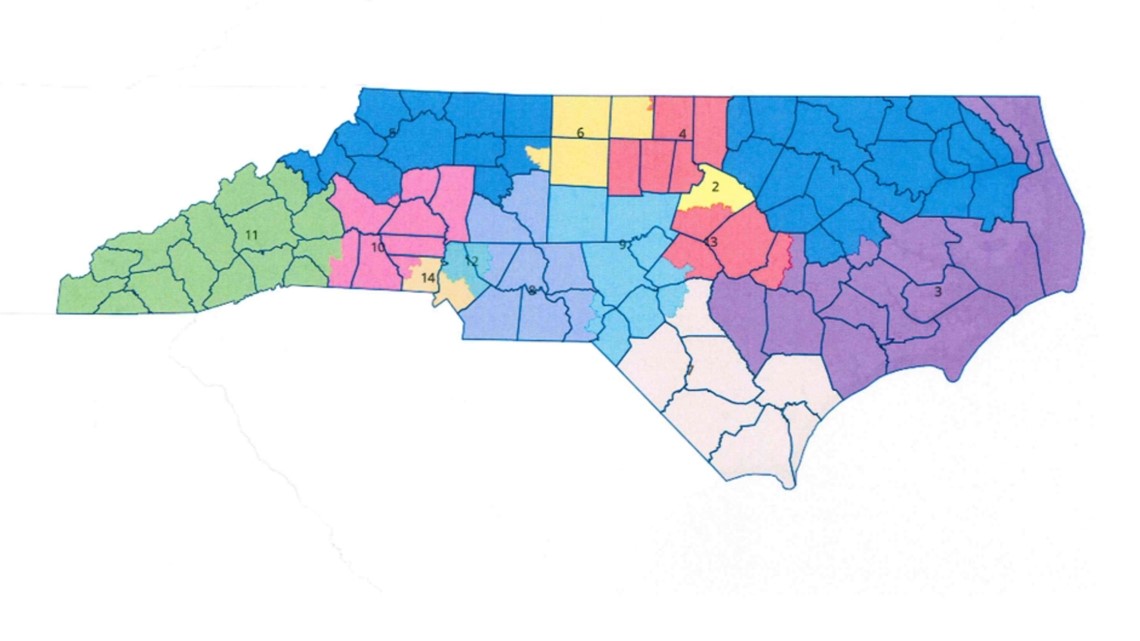
This map determines who represents North Carolina citizens in the U.S. House of Representatives.
The state Supreme Court said the map will apply to the 2022 elections, possibly opening the door to restarting the process for the 2024 elections.
Republican lawmakers said they will challenge Wednesday's order. NC House Speaker Tim Moore wrote, "Today's ruling is nothing short of egregious. The trial court's decision to impose a map drawn by anyone other than the legislature is simply unconstitutional."
Speaker Moore went on, "This court has effectively taken a hammer to our state constitution and the rule of law, and I will appeal this ruling with respect to the congressional map immediately on behalf of the voters."
NC Senate Leader Phil Berger, a Republican, wrote in a statement, "We disagree with the interim Congressional map imposed by the Special Masters and are seeking a stay of that map, however it's time to move on and allow the filing period to begin tomorrow morning."
Berger went on to say he's thankful the legislative maps were approved.
Here is the congressional map used in the 2020 election:

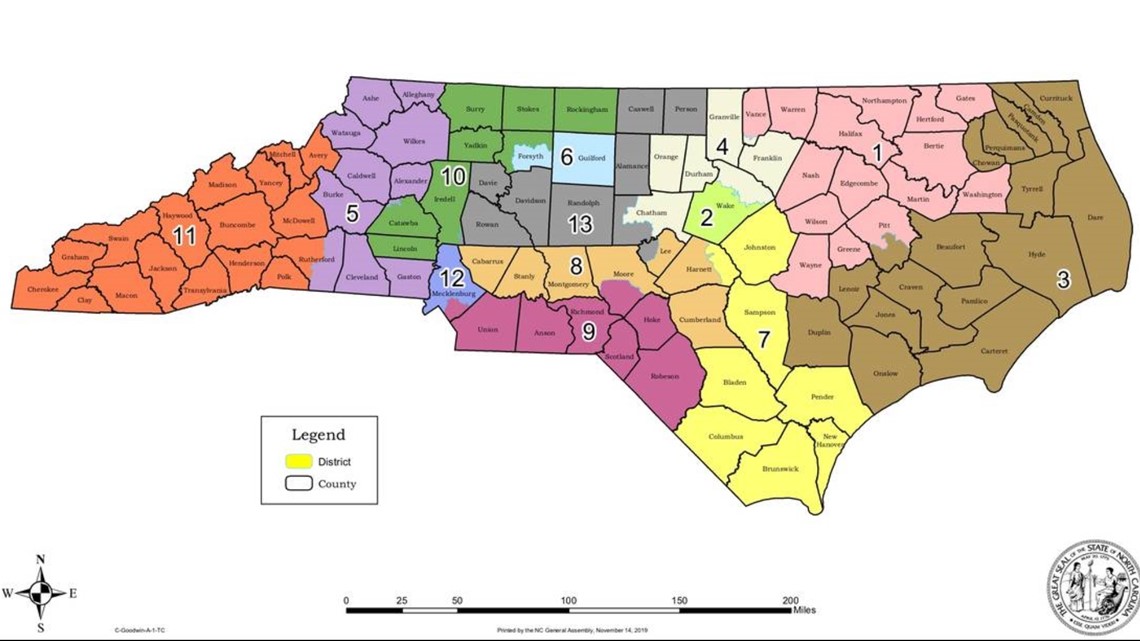
Key differences between the 2020 map and the interim 2022 map took shape in the Piedmont Triad. District 6 would now include all of Guilford County, Winston-Salem, Rockingham and Caswell Counties. District 5 picked up the rest of Forsyth County among other regions. Randolph County moved into District 9. Alamance County moved into District 4. District 13 moved over to Wake County and other parts of central North Carolina. North Carolina also picked up a 14th congressional district because of significant population growth found in the 2020 Census. That district would be located in the Charlotte area.
While the court rejected the General Assembly's updated congressional plan, it did approve the updated state House and state Senate plans.
The court wrote the two legislative maps, "do not perpetuate a prior unconstitutional redistricting plan" and are "consistent with the equal voting power requirements of the North Carolina Constitution."
This is the court-approved state House plan:

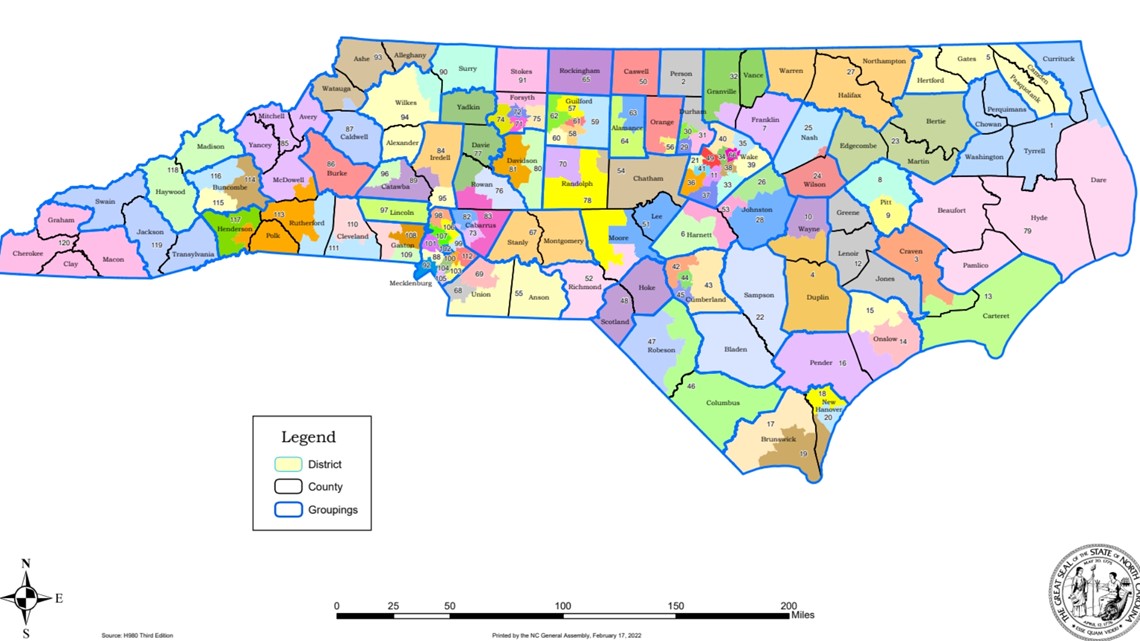
The map passed the state House 115-5 and the state Senate 41-3. It had bipartisan support.
This is the court-approved state Senate plan:

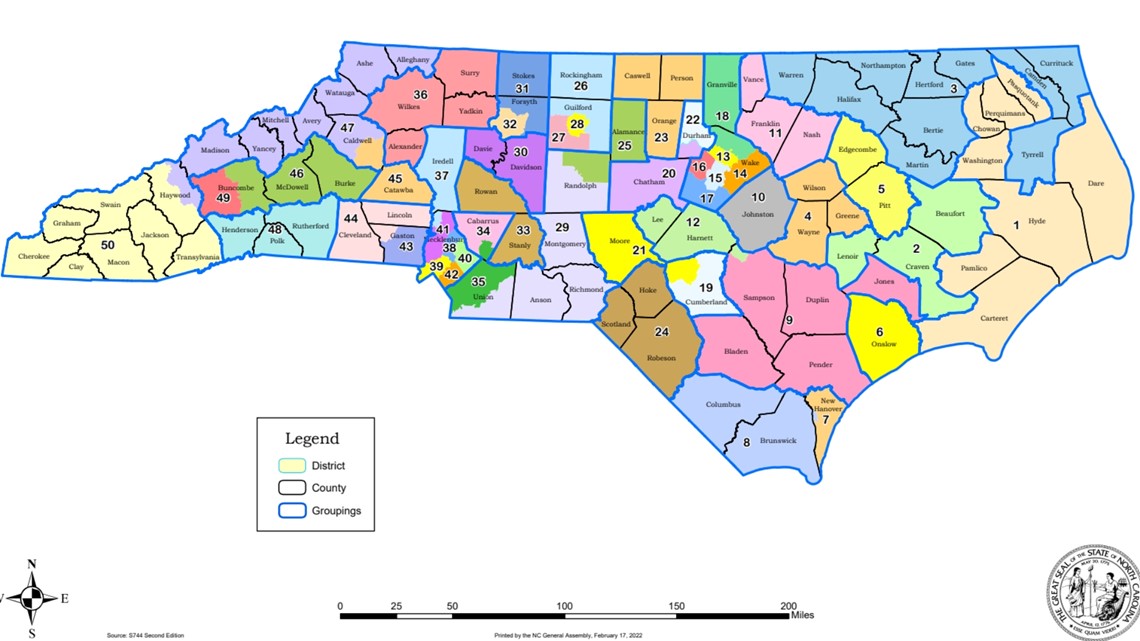
The map passed the state Senate 26-19 along party lines.
Gov. Roy Cooper, a Democrat, released a statement against the court's approval of the state Senate map.
"Today's decision allows a blatantly unfair and unconstitutional State Senate map that may have been the worst of the bunch," Cooper said. "That is bad for North Carolina because it strips voters of their voice in our democracy. Our elections should not go forward until we have fair, constitutional maps."
The court wrote that the state Senate map was largely driven by Republican lawmakers, but met the statistical standard of fairness. Wednesday's order said that Republican and Democratic lawmakers each presented their own state Senate map plans but could not come to a compromise. The Republican plan went to the redistricting committee and was then presented on the Senate floor.
Wednesday afternoon, a group called the Southern Coalition of Social Justice, filed an appeal of the legislative maps (NC House and NC Senate). They claimed the court should've made adjustments to the map as they did for the congressional ones.
Wednesday night, the state Supreme Court struck down all appeals from both sides of the aisle.
On Friday afternoon, the North Carolina General Assembly filed an emergency application with the U.S. Supreme Court for a stay of the state court's decision on the maps. NC House Speaker Tim Moore wrote, "the courts have, once again, violated the separation of powers. This effort to circumvent the elected representatives of the people will not stand."
The appeal to the highest court in the land means the process likely still is not over.
Redistricting happens every ten years when new Census data comes out. State lawmakers passed their initial redistricting plan in November 2021. Democrats argued the maps, approved by the Republican-controlled legislature, were extreme partisan gerrymanders. A lawsuit against the maps made it to the state Supreme Court where the justices ruled 4-3, along party lines, that the maps were unconstitutional.
The court's majority maintained a commitment to keep North Carolina's primary in May. State Republican lawmakers passed a bill in January to push the primary date to June, but Cooper vetoed the bill.
Barring a legal stay, candidate filing resumes Thursday morning using the new boundaries for the May 17 primary.

